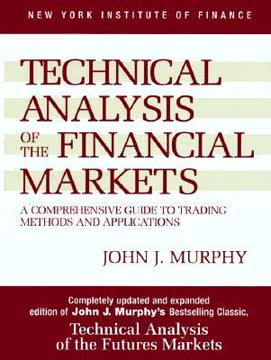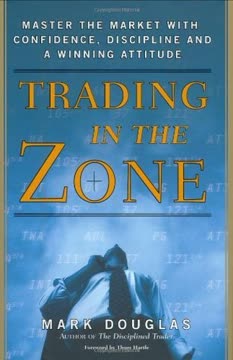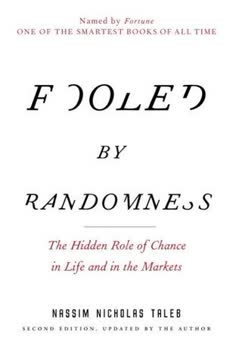つの重要なポイント
1. フェアバリューエリアを理解する:プライスアクションの基盤
どの通貨ペア、株式、商品であっても、フェアバリューとは価格が最も長く取引されたエリアであり、需給が一致し、買い手と売り手双方が現在の期待に合致すると認めた価格帯のことである。
均衡の実現。 フェアバリューエリアは、需給が釣り合った状態を示す。価格が一定の範囲内で上下に動き、横ばいの動きを形成するのが特徴だ。このエリアでは取引量の大部分が集中し、買い手と売り手が現在の適正価格で合意していることを示している。
フェアバリューエリアの見つけ方:
・価格が最も長く滞在するエリアを探す
・同じ価格帯で繰り返し上下動する様子を観察する
・価値エリアの上下にできるだけ空白を残さないようにする
・時間軸を取り除いて価格活動の「膨らみ」や「盛り上がり」をイメージする
フェアバリューエリアの識別を習得することで、市場構造や将来の価格動向を洞察でき、より的確なトレード判断の基礎を築ける。
2. エクセスプライスを認識する:長期トレーダーの足跡
先に示した例でフェアバリューエリアの上下に現れるエクセスプライスは、長期トレーダーの意図を示す足跡と解釈できる。
境界を超えた動き。 エクセスプライスは価格が一時的にフェアバリューエリアの外に出ることで発生し、明確な需給ゾーンを示す。これらの動きは通常短時間で、価格はすぐに価値エリアに戻る。エクセスプライスは市場を大きく動かす力を持つ長期トレーダーの意図を示すため重要だ。
エクセスプライスの特徴:
・フェアバリューエリアの外への短時間の価格移動
・素早い反発と価値エリアへの復帰
・強力なサポートまたはレジスタンスを形成
・より顕著な反発(ヒゲ)は強い需給を示す
エクセスプライスを理解することで、市場の転換点や長期トレーダーの参入・撤退ポイントを見極めやすくなり、より有利なトレード判断に役立つ。
3. コントロールプライスを特定する:価値エリアの重心
コントロールプライスとは、価値エリア内での重要なサポート・レジスタンスの価格水準である。
中心的な価格ポイント。 コントロールプライスはフェアバリューエリア内で最も取引が集中する価格帯であり、価値エリア内の価格動きを引き寄せる重力の中心として機能する。これを理解することは、価値エリア内のサポート・レジスタンスを見極めるうえで不可欠だ。
コントロールプライスの主な特徴:
・価値エリア内で価格が最も長く滞在する場所
・価格のサポートおよびレジスタンスとして機能
・価値エリアのほぼ中央付近に位置することが多い
・市場全体の構造把握に役立つ
コントロールプライスを特定することで、価値エリア内の転換点を予測し、より正確なエントリー・エグジットが可能になる。また、買い手と売り手のバランスを理解し、市場構造の把握にもつながる。
4. イニシアティブトレードとレスポンシブトレードを区別する
イニシアティブの売り「3」ムーブは、レスポンシブな買いが始まるポイントでもある。これは買い手が低価格に関心を持ち始めたことを示している。
行動と反応。 イニシアティブトレードは、買い手または売り手が積極的に価格をフェアバリューエリアから押し出す動きで、トレンド変化の兆候を示す。一方、レスポンシブトレードはその動きに対して反応し、価格を価値エリアへ戻そうとする動きだ。両者の違いを理解することは、市場の動きを予測するうえで重要である。
特徴:
・イニシアティブムーブ:価値から強く、しばしば垂直的に価格が動く
・レスポンシブムーブ:価値へゆっくりと戻る、やや弱い動き
・イニシアティブはトレンド変化の可能性を示唆
・レスポンシブは現トレンドの継続を示す
イニシアティブとレスポンシブの動きを見極めることで、市場心理やトレンド変化の兆候を把握し、より的確な売買判断が可能になる。
5. バリューシフティングを習得する:トレンド分析の鍵
価値は既存の価値エリアの上に新たに形成されることがある。
動的な価格の進化。 バリューシフティングとは、新しいフェアバリューエリアが既存の上または下に形成される現象であり、トレンドの発生を示す。価値の変化を理解することは、トレンド分析や将来の価格動向の予測に不可欠だ。
バリューシフティングのポイント:
・前の価値エリアの上に新たな価値エリアができると上昇トレンドを示す
・下にできると下降トレンドを示す
・価値エリアの傾きはトレンドの強さを示す
・価値エリアの形成変化はトレンド転換の兆候となる
バリューシフティングをマスターすることで、トレンドの初期段階を捉え、転換の可能性を予測し、トレンドの強弱を判断できるようになる。これにより、より戦略的なエントリー・エグジットが可能となる。
6. バリューエリアを強力なサポート・レジスタンスとして活用する
価値は価格を引き寄せる。
磁石のような価格帯。 フェアバリューエリアは、過去に買い手と売り手が合意した価格帯であるため、将来の価格動向において強力なサポートやレジスタンスとして機能しやすい。
バリューエリアをサポート・レジスタンスに活用する方法:
・バリューエリアの高値は下降トレンドでレジスタンスとなることが多い
・バリューエリアの安値は上昇トレンドでサポートとなることが多い
・コントロールプライスはサポート・レジスタンスの両方として機能する
・バリューエリアの境界が破られると、その役割が逆転することがある(サポートがレジスタンスに、またはその逆)
バリューエリアのサポート・レジスタンス特性を認識することで、高確率のエントリー・エグジットポイントを見極め、効果的な損切りや利確設定が可能になる。これにより、リスク管理の精度も向上する。
7. マルチタイムフレーム分析を実践する:包括的な市場分析のために
トレードの準備として、まずは自分がトレードする時間軸よりも上位の時間軸で価格の動きを把握することが必要だ。
全体像の把握。 マルチタイムフレーム分析とは、上位時間軸で市場の大局を把握し、その後下位時間軸で具体的なトレードのタイミングを探る手法である。これにより、市場構造をより深く理解し、高確率のトレード機会を見つけやすくなる。
マルチタイムフレーム分析の実践手順:
- 上位時間軸で大局(トレンドや主要なバリューエリア)を分析
- トレード時間軸でエントリー候補を特定
- さらに下位時間軸で正確なエントリー・エグジットポイントを探る
この手法の利点:
・大局の市場構造に沿ったトレードが可能になる
・全体トレンドに逆らう低確率トレードを避けられる
・下位時間軸の価格動向をより正確に解釈できる
・複数時間軸での重要レベルを把握しリスク管理が向上する
マルチタイムフレーム分析を取り入れることで、より広い視野に立った判断が可能となり、高確率トレードとリスク管理の両立が期待できる。
8. バリューエリアフィリングを活用した高確率トレード
価格が価値に戻り受け入れを示すと、10回中8回はバリューエリアを満たす動きをする。
予測可能な価格行動。 バリューエリアフィリングとは、価格が一度形成されたフェアバリューエリアに戻り、その中で受け入れられる(滞在する)ことで、エリア全体を通過する可能性が高いという概念だ。これを利用することで高確率のトレード機会を得られる。
バリューエリアフィリングトレードの実践:
- 既存のバリューエリアへの価格の戻りを確認
- バリューエリア内での価格の受け入れサインを探す
- バリューエリアの反対側境界を目標にトレードを仕掛ける
- 明確な境界の反発を待ってからエントリーする
注意点:
・エントリーは明確な境界反発を確認してから行う
・下位時間軸で正確なエントリーポイントを探す
・損切りはバリューエリア外に設定しリスクを管理する
・すべての戻りが完全なフィリングになるわけではないことを理解する
バリューエリアフィリングの概念を活用することで、明確なエントリー・エグジットとリスク管理が可能な高確率トレードを実現できる。
9. バリューエリア分析によるトレンド変化の認識
価値が上昇し、コントロールプライスも上向きであるため、現時点では上昇トレンドにある。ただし、コントロールの両側で取引活動が見られ、価値エリアの両側の出来高に明確な差がないことから、上昇トレンドは強くないと判断できる。
トレンド転換の兆候。 バリューエリア分析はトレンド変化の可能性を示す重要な手がかりを提供する。価値エリアの形成や特徴の変化を観察することで、反転やトレンドの強弱変化を予測できる。
トレンド変化の主な指標:
・価値エリア内の取引活動のシフト(例:上昇トレンドでコントロール下側の活動増加)
・コントロールプライスの傾きの変化
・現トレンドと逆方向の新たな価値エリアの形成
・トレンド方向に逆らうエクセスプライスの増加
さらに注目すべき点:
・価値エリア内の価格回転の狭まり
・イニシアティブとレスポンシブの行動変化
・トレンドに逆らう顕著なヒゲやエクセスプライスの形成
これらの兆候をバリューエリア分析で捉えることで、トレンド変化を早期に察知し、タイムリーな売買やリスク管理が可能となる。
10. バリューエリア概念を用いたリスク管理の実践
どのようなトレード手法であっても、損切りは価格が最も触れにくい場所に設定する必要がある。
戦略的なリスクコントロール。 バリューエリアの概念は、トレードにおけるリスク管理の枠組みを提供する。バリューエリアの境界、コントロールプライス、エクセスプライスのレベルを活用することで、より効果的な損切りや利確ポイントを設定できる。
バリューエリアを活用したリスク管理のポイント:
・重要なエクセスプライスやヒゲの外側に損切りを置く
・バリューエリアの境界を利確ポイントとして利用する
・トレーリングストップの調整にコントロールプライスを考慮する
・リスク・リワード比率をバリューエリアの幅に合わせて設定する
基本原則:
・価格が到達しにくい場所に必ず損切りを設定する
・エントリーから損切りまでに複数のサポート・レジスタンスを考慮する
・バリューエリア分析に基づく損切り距離に応じてポジションサイズを調整する
・バリューエリアのブレイクアウトに備えリスクを適切に管理する
これらのバリューエリアに基づくリスク管理を実践することで、リスク・リワード比率の改善や資金保護が期待でき、市場構造に沿った一貫性のあるトレード成果を目指せる。
最終更新日:
FAQ
What's "Price Action Breakdown" about?
- Focus on Price Action: "Price Action Breakdown" by Laurentiu Damir is centered on trading using price action, which involves analyzing raw price movements without relying on technical indicators.
- Educational Purpose: The book aims to educate traders on interpreting price movements to make informed trading decisions across various financial markets.
- Comprehensive Approach: It provides a detailed explanation of price action techniques, focusing on core concepts and strategies developed from the author's personal trading experience.
- Universal Application: The methods discussed are applicable to all financial markets, including stocks, forex, futures, and more, due to their basis in crowd behavior and supply-demand dynamics.
Why should I read "Price Action Breakdown"?
- Unique Techniques: The book offers unique price action techniques not commonly found in other trading literature, derived from the author's extensive market experience.
- Structured Learning: It is organized in a way that builds knowledge progressively, with each chapter expanding on the previous one.
- Visual Learning: The book includes numerous chart examples to help readers visualize and understand the discussed concepts effectively.
- Practical Insights: Readers will gain practical insights into market behavior, enabling them to make better trading decisions and improve their trading performance.
Who is "Price Action Breakdown" by Laurentiu Damir for?
- Experienced Traders: The book is intended for traders who already have a basic understanding of market functionalities and are looking to enhance their technical analysis skills.
- Analytical Thinkers: It is suited for individuals who are analytical and willing to put in the hard work required to become proficient traders.
- Non-Superficial Learners: The material is designed for those who are not looking for quick fixes but are interested in developing a deep understanding of market dynamics.
- Passionate Traders: It appeals to traders who are passionate about trading and are committed to improving their skills through diligent study and practice.
What are the key takeaways of "Price Action Breakdown"?
- Fair Value Concept: Understanding the fair value area where price is balanced between supply and demand is crucial for identifying trading opportunities.
- Value Shifting: Recognizing how value areas shift and what this indicates about market trends and potential reversals.
- Initiative vs. Responsive Trading: Differentiating between initiative moves that break away from value and responsive moves that return to it.
- Support and Resistance: Using value areas to identify strong support and resistance levels, enhancing trade entry and exit strategies.
How does Laurentiu Damir define "Fair Value" in trading?
- Balance of Supply and Demand: Fair value is defined as the price area where supply meets demand, resulting in sideways price movement.
- Trading Volume Concentration: It is the area where the bulk of trading volume occurs, indicating consensus on price fairness.
- Value Boundaries: Fair value is marked by upper and lower boundaries, with price often oscillating within these limits.
- Excess Price: Areas where price briefly moves outside the fair value boundaries are considered excess price, indicating potential reversals.
What is "Value Shifting" in "Price Action Breakdown"?
- Directional Movement: Value shifting refers to the gradual movement of value areas in a particular direction, indicating a trend.
- Slow Imbalance: It occurs when there is a slight imbalance in supply and demand, causing price to move slowly in one direction.
- Merging Values: Closely positioned value areas can merge into a single shifting value area, providing insight into market sentiment.
- Trend Analysis: Recognizing value shifting helps traders identify the strength and direction of market trends.
How does "Price Action Breakdown" explain "Initiative and Responsive Trading"?
- Initiative Trading: This involves forceful moves away from value areas, indicating a strong conviction by traders to change price levels.
- Responsive Trading: It refers to price movements that return to value areas, showing a lack of conviction to sustain a breakout.
- Volume and Force: Initiative moves are typically accompanied by high trading volume and strong price bars, while responsive moves are weaker.
- Market Control: Understanding these concepts helps traders identify who is in control of the market—buyers or sellers.
What role do "Support and Resistance" play in "Price Action Breakdown"?
- Value Area Boundaries: Support and resistance levels are often found at the boundaries of value areas, where price frequently reverses.
- Trading Decisions: These levels are crucial for making informed trading decisions, such as entry and exit points.
- Dynamic Levels: Support and resistance can change roles when broken, with former support becoming resistance and vice versa.
- Confluence Zones: Areas where multiple support or resistance levels coincide provide stronger trading signals.
How does Laurentiu Damir suggest using "Timeframes" in trading?
- Higher Timeframe Analysis: Traders should analyze higher timeframes to identify the big picture and establish a trading framework.
- Lower Timeframe Execution: Once the framework is set, traders can execute trades on lower timeframes for more precise entries and exits.
- Timeframe Correlation: The book suggests specific timeframe correlations, such as using daily charts for four-hour trades, to ensure consistency.
- Avoiding Noise: Higher timeframes help filter out market noise, providing clearer signals and reducing the impact of erratic price movements.
What are the "Supply and Demand Key Levels" in "Price Action Breakdown"?
- Footprint of Traders: Key levels are identified by observing tails and excess price, which indicate where long-term traders enter the market.
- Parallel Lines: These levels move in line with the control price, providing future support and resistance zones.
- Trading Opportunities: Recognizing these levels allows traders to anticipate where price is likely to turn, offering high-probability trading setups.
- Rejection Confirmation: Traders should wait for price to show rejection at these levels on a lower timeframe before entering trades.
What are the best quotes from "Price Action Breakdown" and what do they mean?
- "The best indicator you can have is your brain analyzing the raw price movements." This emphasizes the importance of understanding price action over relying on lagging technical indicators.
- "Value attracts price." This highlights the concept that price tends to return to value areas, providing trading opportunities.
- "Treat trading like a business and do the hard work." It underscores the need for dedication and effort to achieve consistent profitability in trading.
- "Every movement that price makes, interpreting it and putting it together to help you make the best trading decisions possible." This quote encapsulates the essence of price action trading—analyzing and understanding price movements to make informed decisions.
レビュー
『Price Action Breakdown』は概ね好意的な評価を受けている。読者からは、プライスアクションの概念やバリューエリア取引についての明快な解説が高く評価されている。多くの人が市場の動向を理解し、取引戦略の向上に役立つと感じている。本書は実践的なアプローチと具体的な事例を用いている点が特に好まれている。一方で、ある程度の取引経験を持つ読者に適しているとの指摘もある。内容が他書で見られるものと重複している、あるいは一部のテーマで深掘りが不足しているといった批判も少数ながら存在する。
Similar Books














